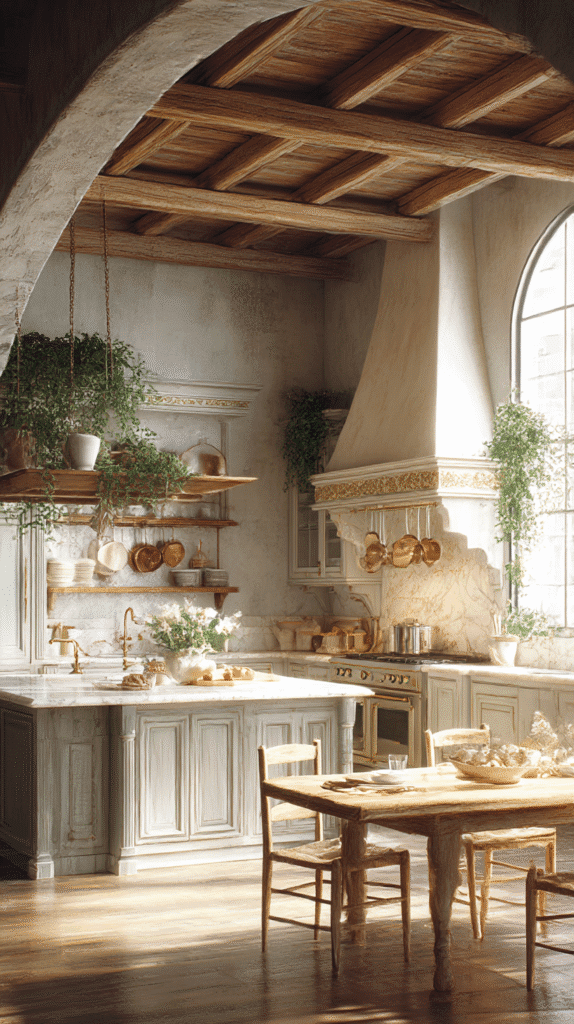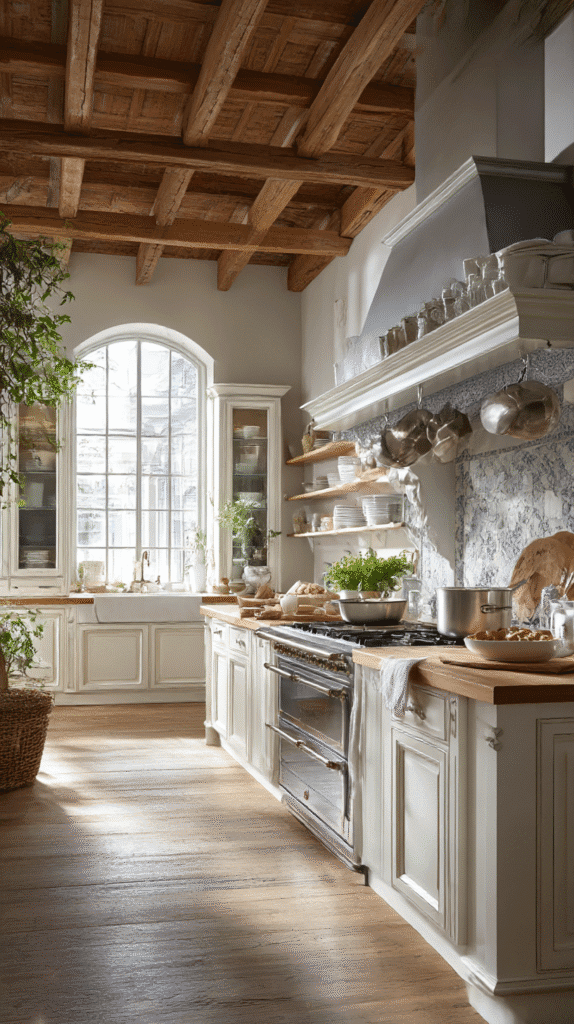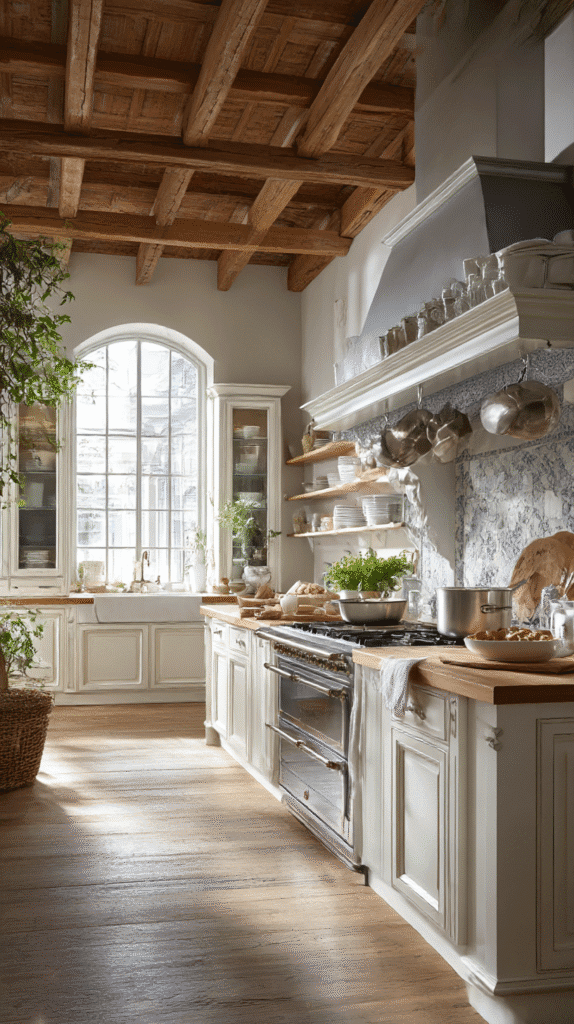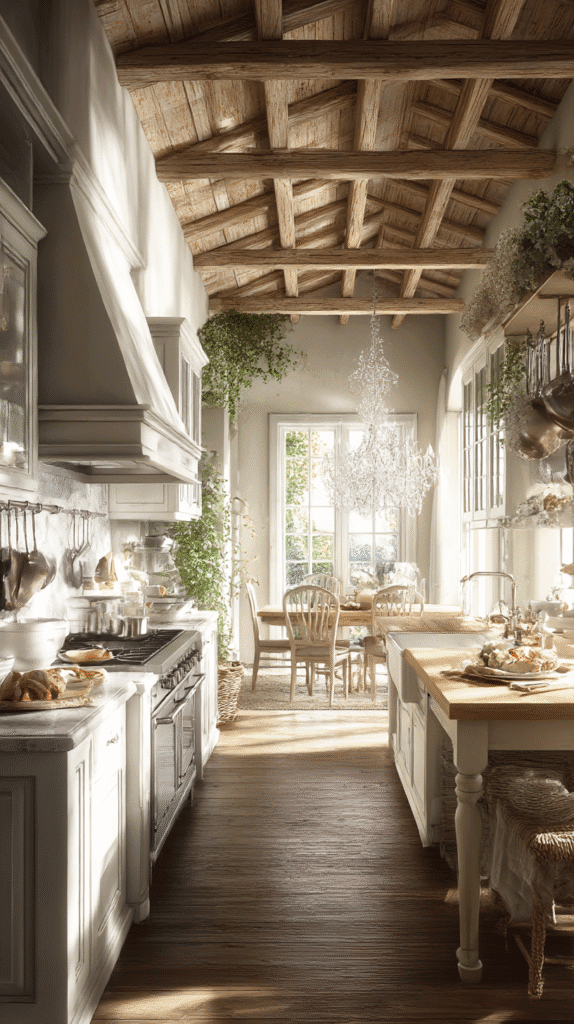
Embracing the Charm of Farmhouse Kitchens with European Elegance
In the world of interior design, kitchens stand as the heart of the home—a place where function meets style, and comfort meets innovation. Currently, there’s a revival of the beloved farmhouse kitchen, a style that conjures up images of warm, welcoming spaces characterized by rustic charm and practical comfort. Now, blend in the sophisticated sensibilities of European kitchens, and a serene culinary symphony is born. This exciting convergence of aesthetics is more relevant now than ever, as homeowners seek spaces that reflect both cozy tradition and sleek modernity.
In this guide, I’ll show you how to expertly layer European elegance with farmhouse roots, creating visual serenity that’s both timeless and fresh. You’ll learn practical steps, hints on avoiding common mistakes, and get inspired by some trending examples that speak to both cozy rusticity and Euro-centric sophistication.
The Allure of European Elegance in Farmhouse Kitchens
First, let’s talk about European elegance and why it pairs so deliciously with the farmhouse idiom. European kitchens are famed for their minimalist lines, high functionality, and the seamless integration of cutting-edge technology. Countries like Italy, France, and Scandinavian nations bring unique design elements that can refresh a traditional farmhouse look with zest and contemporary flair.
For instance, integrating Italian marble countertops or French-inspired cabinetry can elevate a rustic space into chic territory. Scandinavian influences bring in light woods with clean lines, while German kitchen innovations ensure the space remains fully functional. As you can tell, it’s a marvelous marriage of practicality and charm, each enhancing the other.
Designing the Space: Where Farmhouse Meets Europe
When designing a farmhouse kitchen with a European touch, the first step is to find your focal point. Perhaps it’s a vintage farmhouse table from a Parisian flea market or handcrafted terracotta tiles reminiscent of Mediterranean villas. The goal is to balance these inviting rustic materials with European finesse.
Consider incorporating natural materials like wood and stone, which are staples in farmhouse design but also found in many European homes, albeit often presented with a more polished finish. Choose a neutral color palette as a backdrop; whites, grays, and soft blues mirror the serene landscapes of Provence or the rugged coastlines of Italy.

A Closer Look: Vintage vs. Modern European Influences
Choosing between vintage and modern European influences resembles selecting between rose and prosecco—not always an easy decision, as both offer delightful appeals. Vintage European accents might include distressed wood beams or a cast-iron stove, both lending historical depth. Modern influences, however, might see sleek cabinetry from brands like Poggenpohl or cutting-edge appliances from Gaggenau made to blend seamlessly into your rustic haven.
Both styles bring unique advantages, but a balanced mix often yields the most dynamic results, subtly nodding to the past while stepping boldly into the future. The choice ultimately hinges on your personal style and the atmosphere you wish to cultivate.
Trend Forecasts for Farmhouse-European Kitchens
Stay ahead of the curve with insight into where the growing interest in this hybrid design style might go by 2026 and beyond. According to Pinterest Predicts and other trend forecasters, sustainability is key. Expect to see kitchens that not only look timeless but are eco-friendly, using reclaimed wood and energy-efficient appliances.
Mixed metal finishes are also on the rise, successfully marrying the stainless steel of modern kitchens with the brass of older European traditions. Look for resources on Instagram or Houzz to see real-life kitchens adopting these trends.

DIY Tips for the Ultimate Farmhouse-European Experience
Here’s how to bring a bit of DIY spirit into your kitchen design process. Start small by incorporating vintage finds from local antique shops—think copper pots or retro dishware. Paint existing cabinetry a soft eggshell color for an instant uplift.
Accessorizing with European linens, perhaps a French tablecloth or a set of Swedish woven placemats, adds layers of style without a massive overhaul. 🧺Don’t shy away from mixing and matching: farmhouse kitchens favored eclectic collections long before it was chic.
Avoiding Common Design Faux Pas
In pursuit of your dream kitchen, you might naturally stumble into some common pitfalls. A frequent error lies in over-designing, steering too far into either the rustic or ultra-modern end of the spectrum. Remember, the beauty lies in balance.
A seamless fusion avoids mismatches by maintaining a consistent color scheme and selection of materials that play nicely together. Avoid overcrowding with knick-knacks—focus on essentials and select few unique pieces that add personality to the space without overwhelming it.
Real-Life Inspirations: Designers Weigh In
Let’s look at some inspiring examples from renowned designers who have mastered this aesthetic blend. Joanna Gaines, a farmhouse style icon, often incorporates Euro-inspired tiles or open shelving with a continental flair in her designs. In an episode of “Fixer Upper,” she transformed a kitchen with a blend of rustic wood beams and sleek, minimalist lighting fixtures from Arteriors Home, showcasing a perfect marriage of styles.
Another notable mention is the work of Martha O’Hara Interiors, where kitchen remodels often showcase soft, inviting spaces with narrations of both comfort and cosmopolitan elegance. Martha herself advises, “Let the story of your home unfold naturally”—an ethos that captures the essence of the farmhouse-European concept.
In conclusion, may your farmhouse kitchen, kissed with European sophistication, become a joyous testament to both comfort and style, replete with old-world wonder and modern innovation. Whether quaint and rustic or sleekly modern, your kitchen can—and should—be as unique as the meals shared within it.

